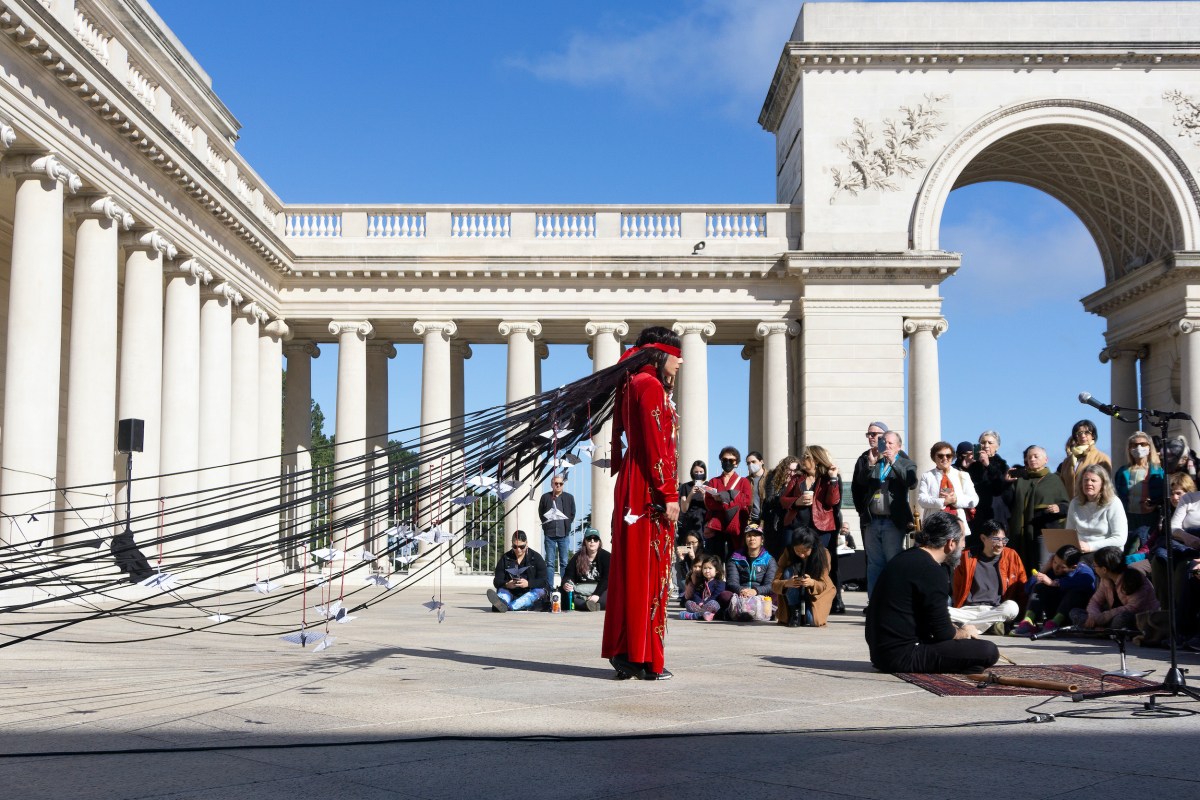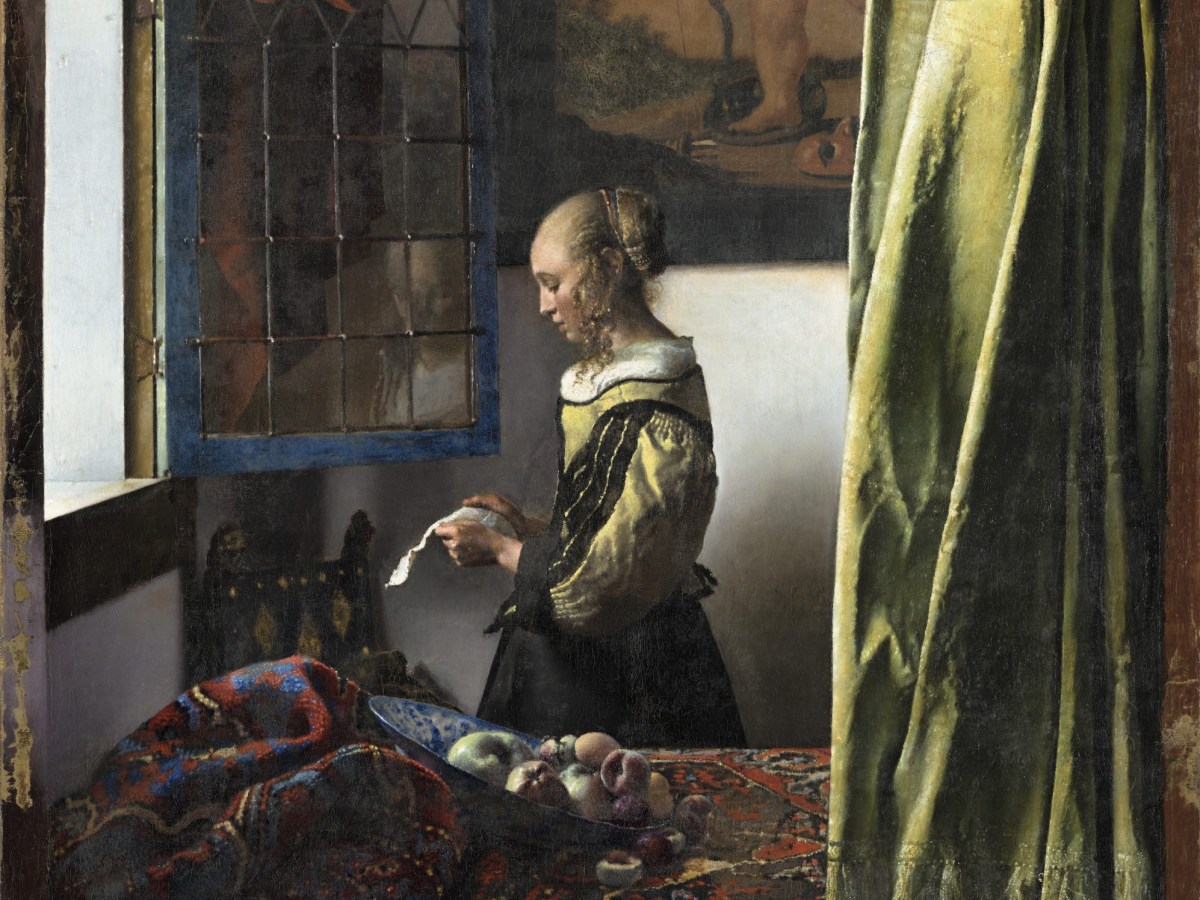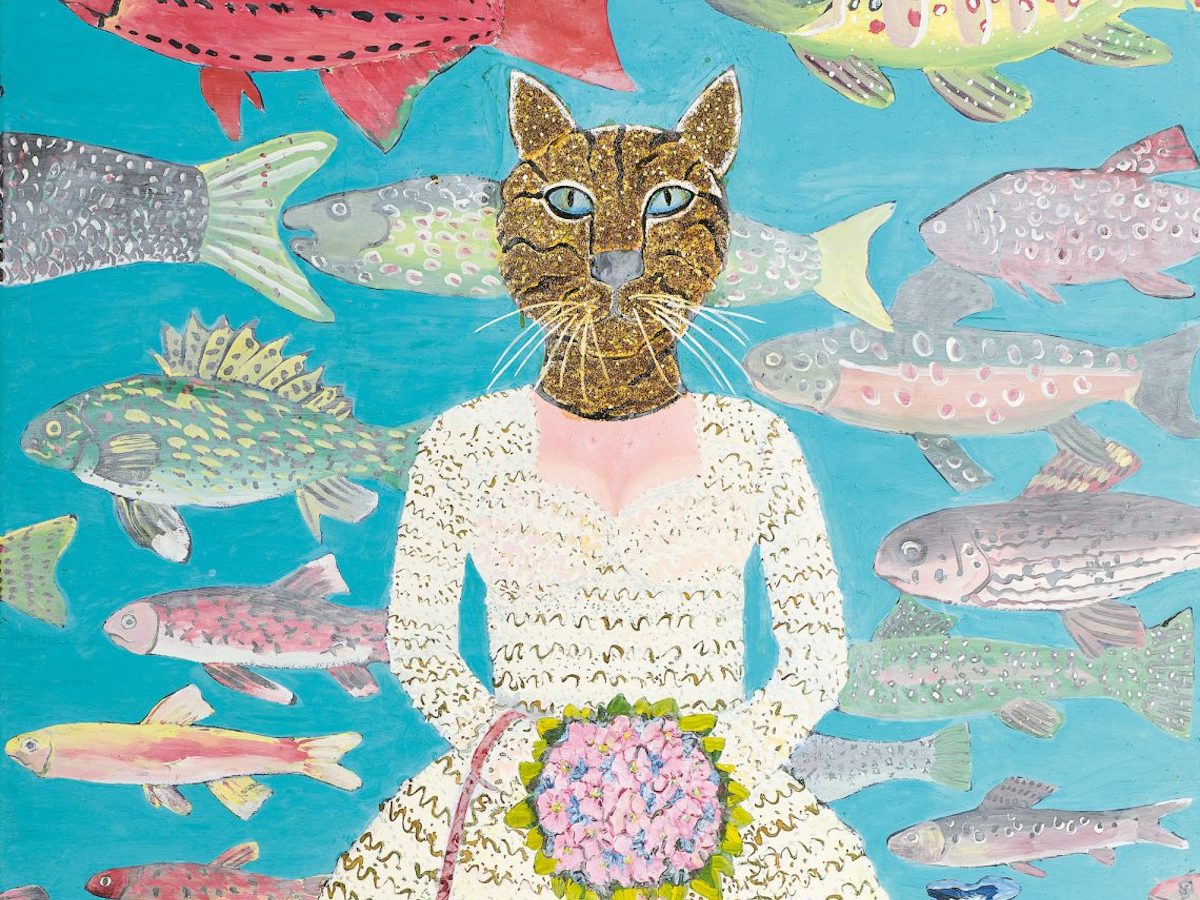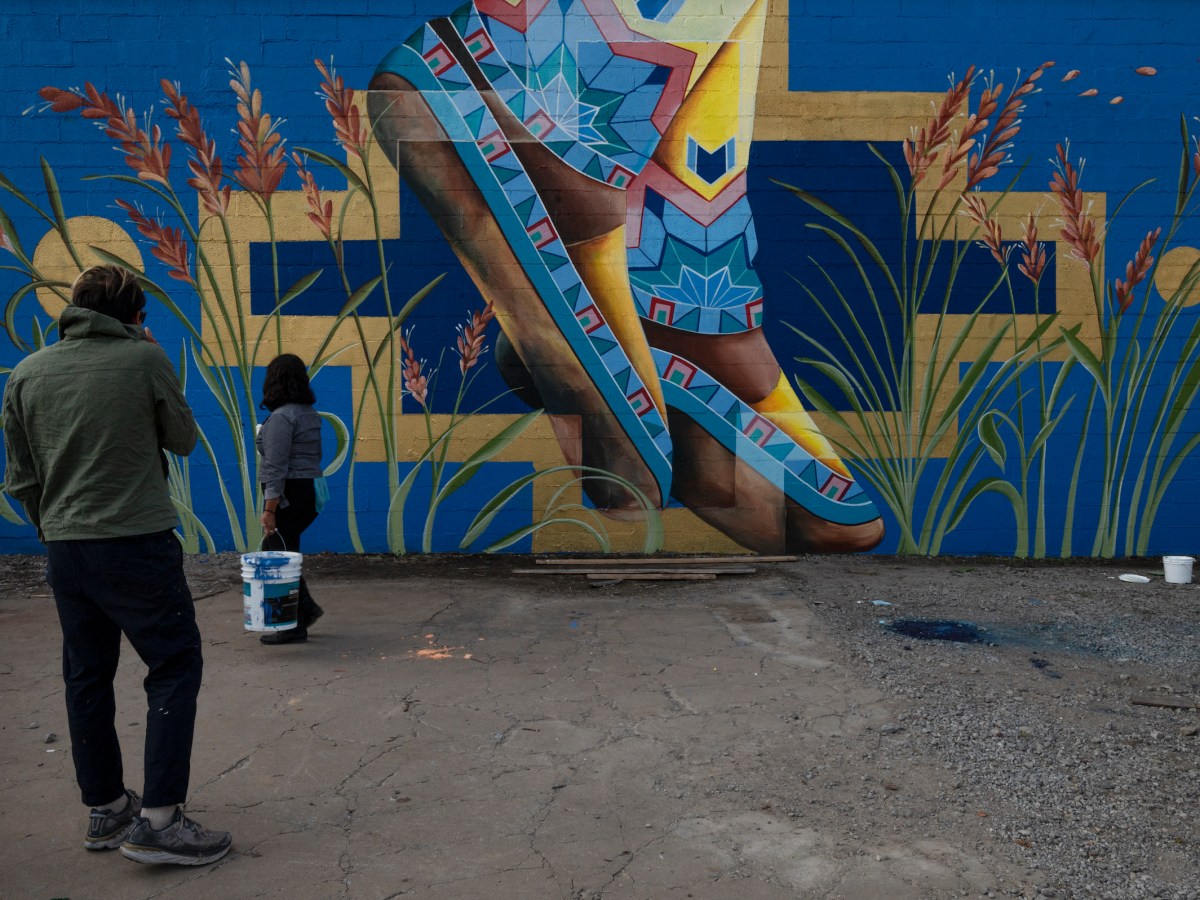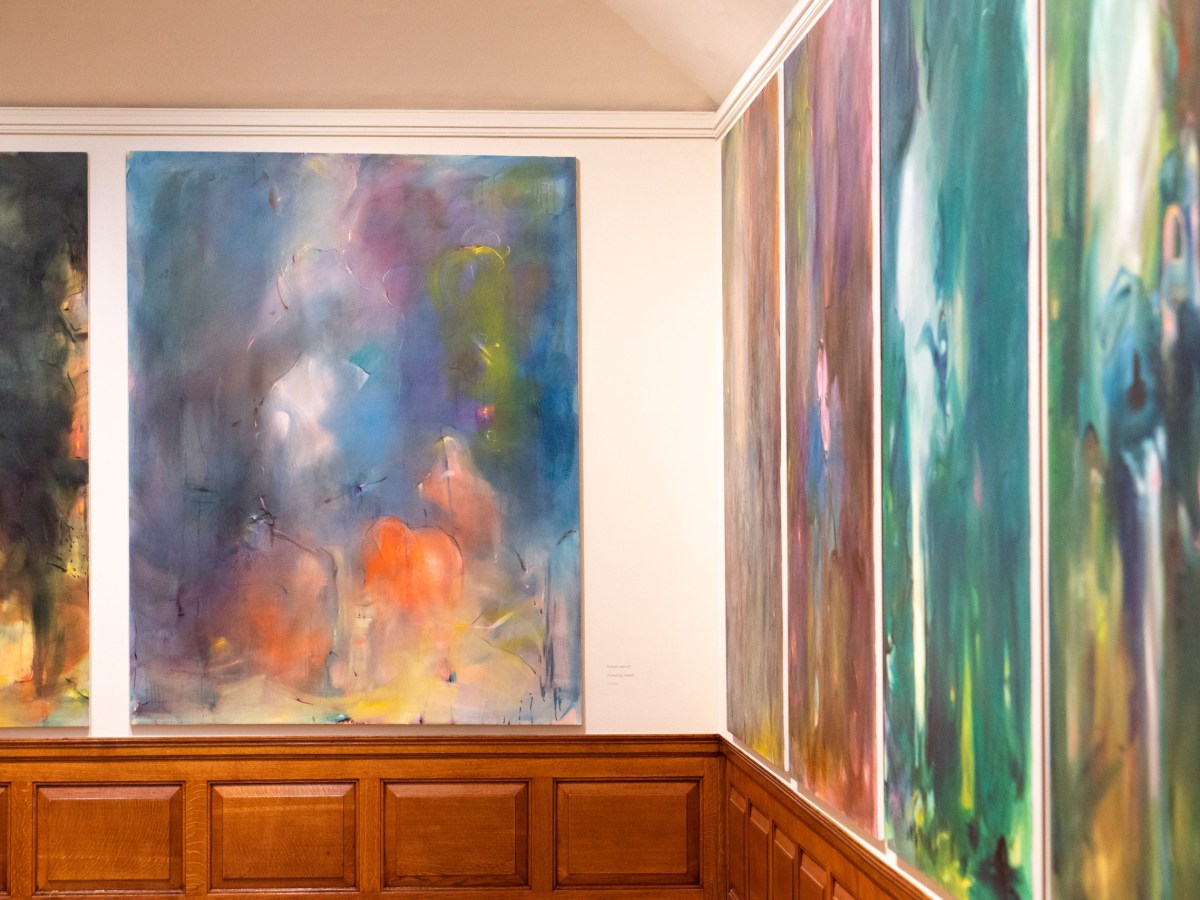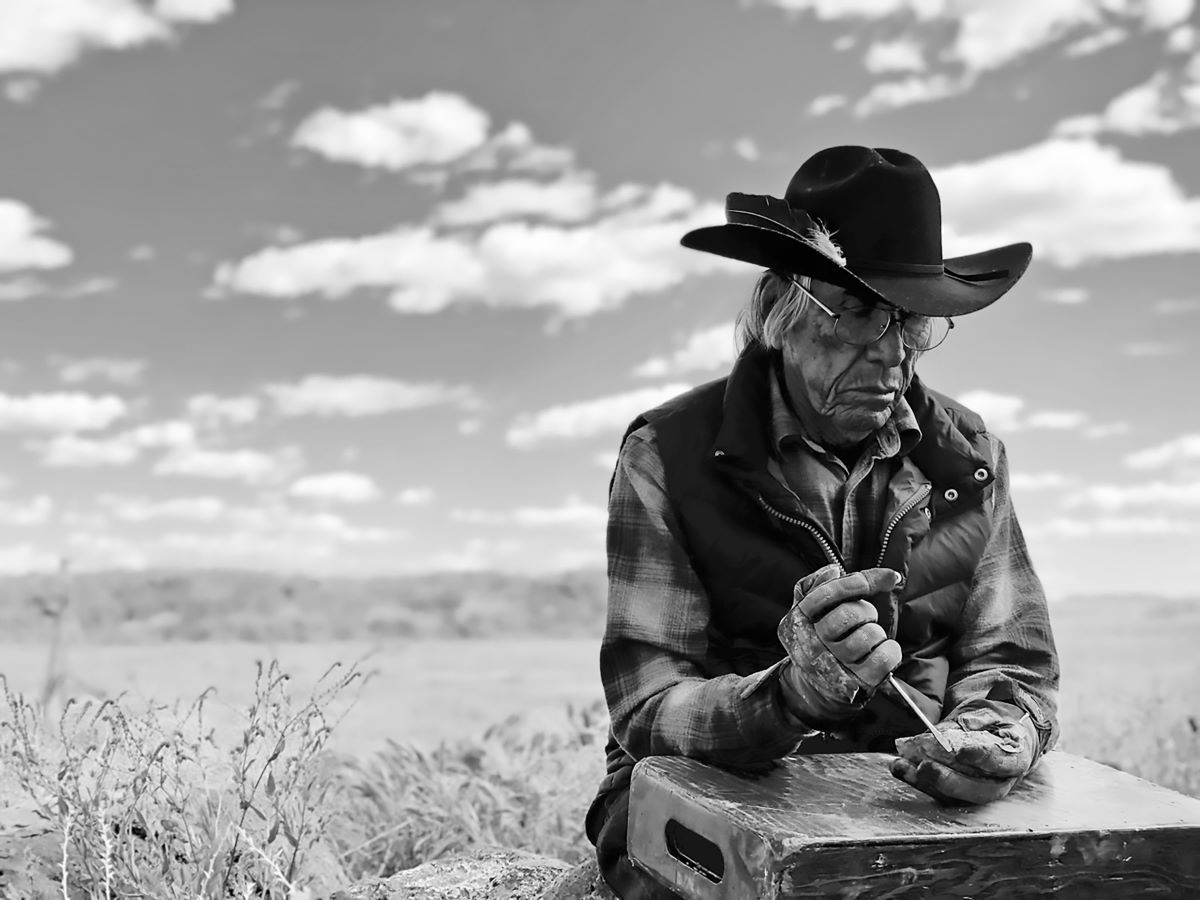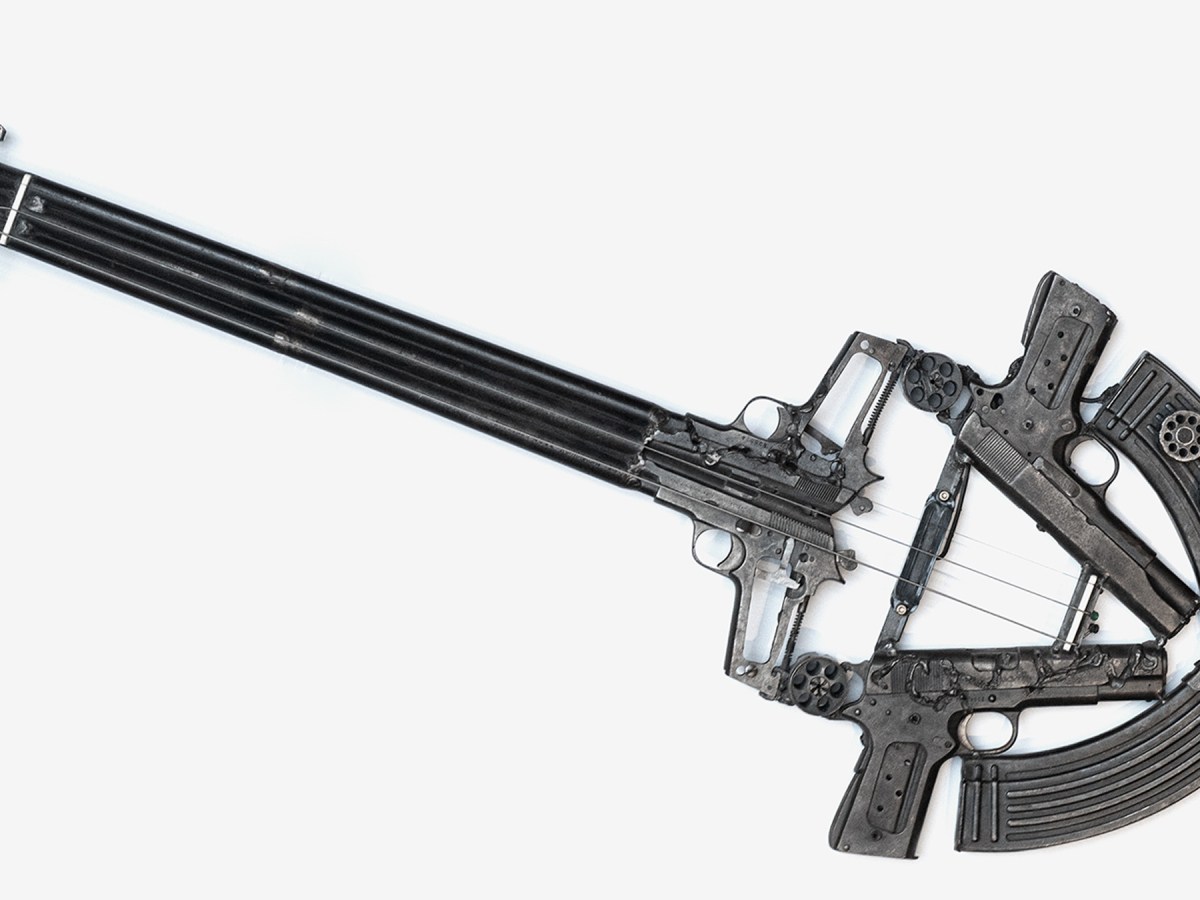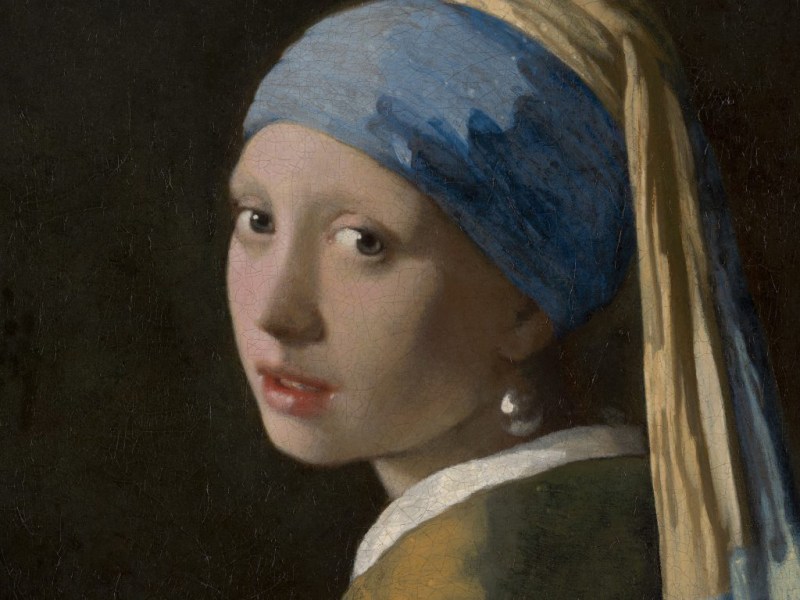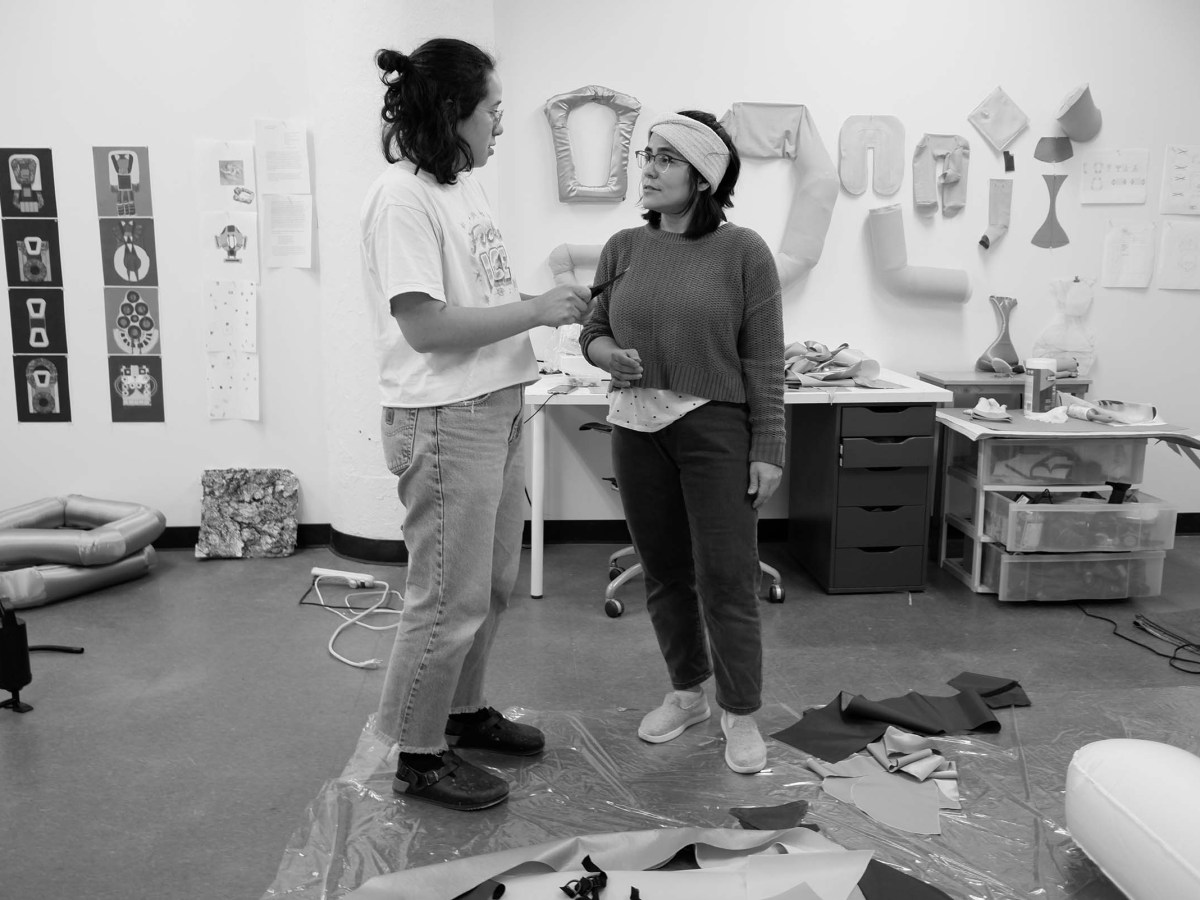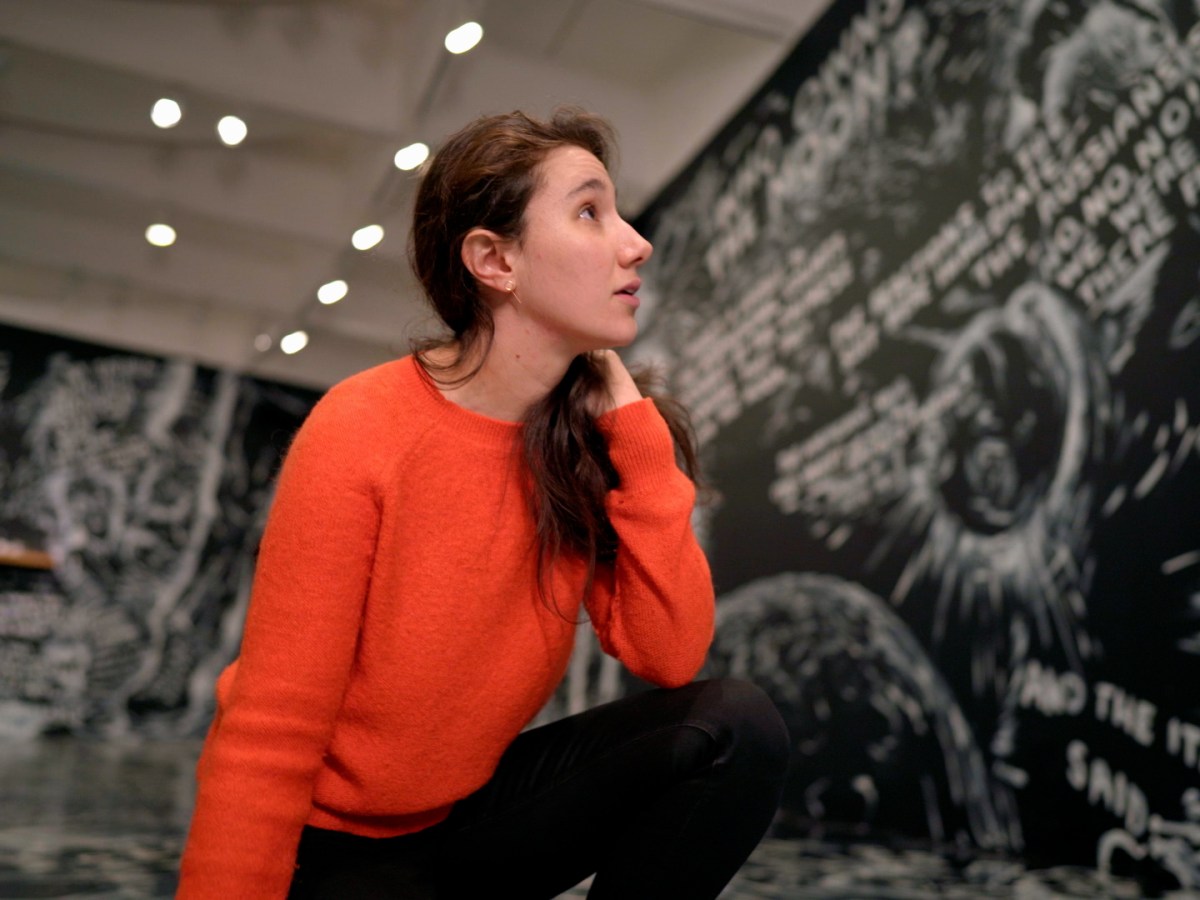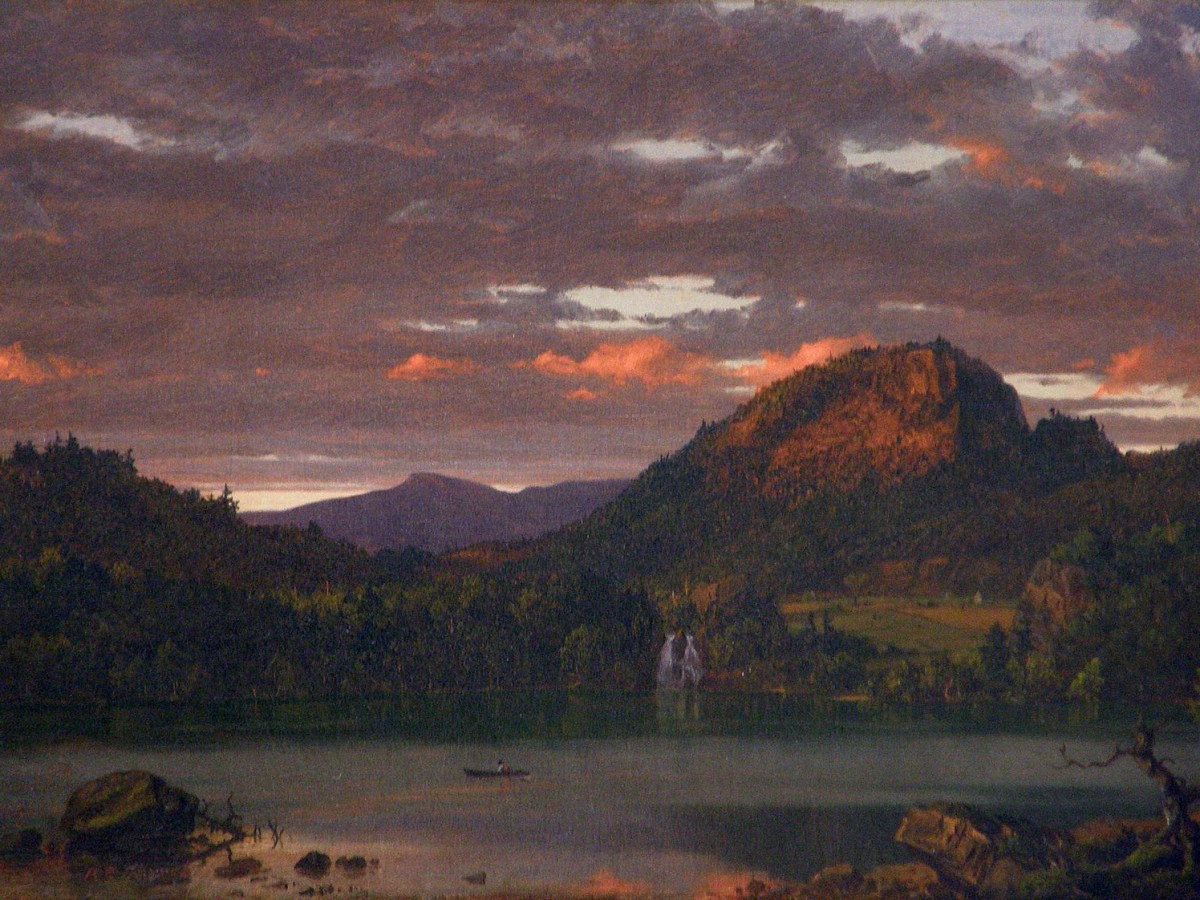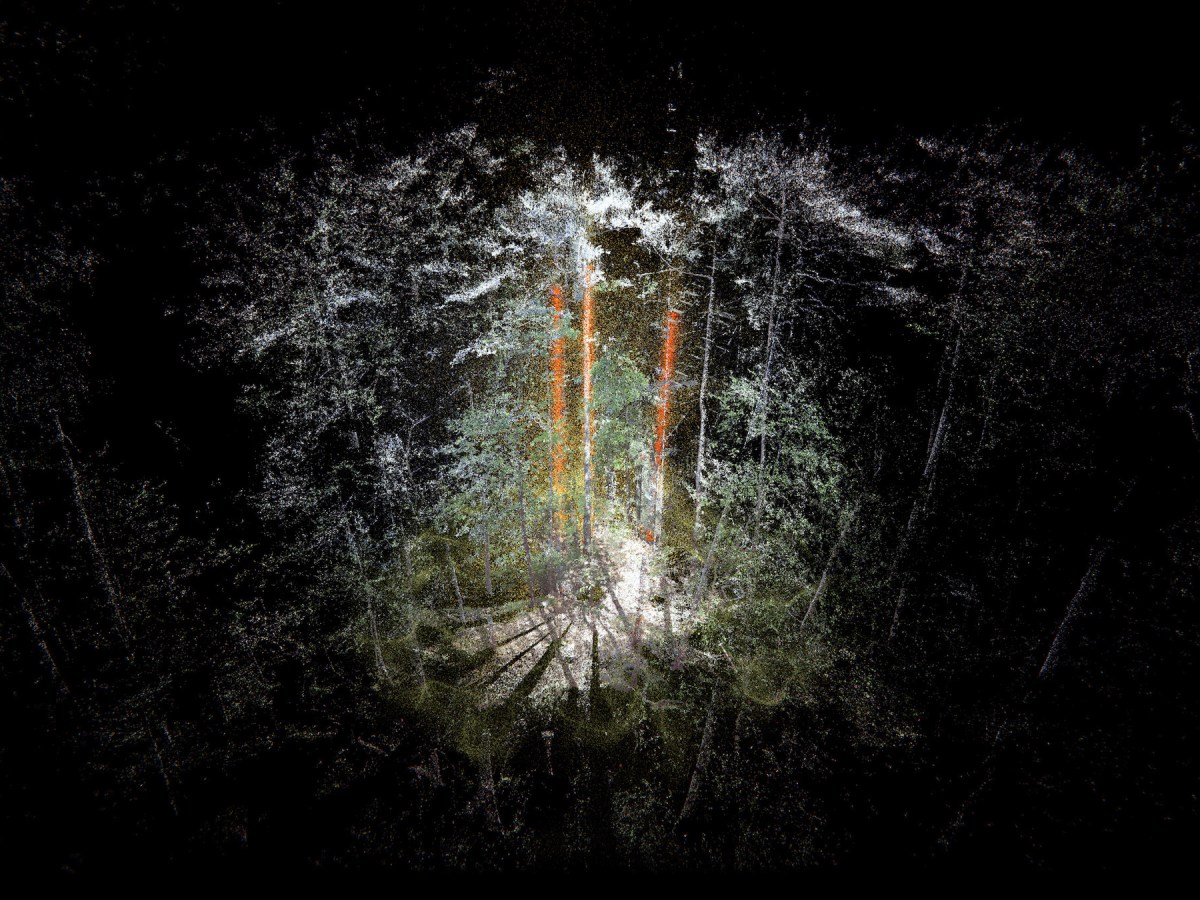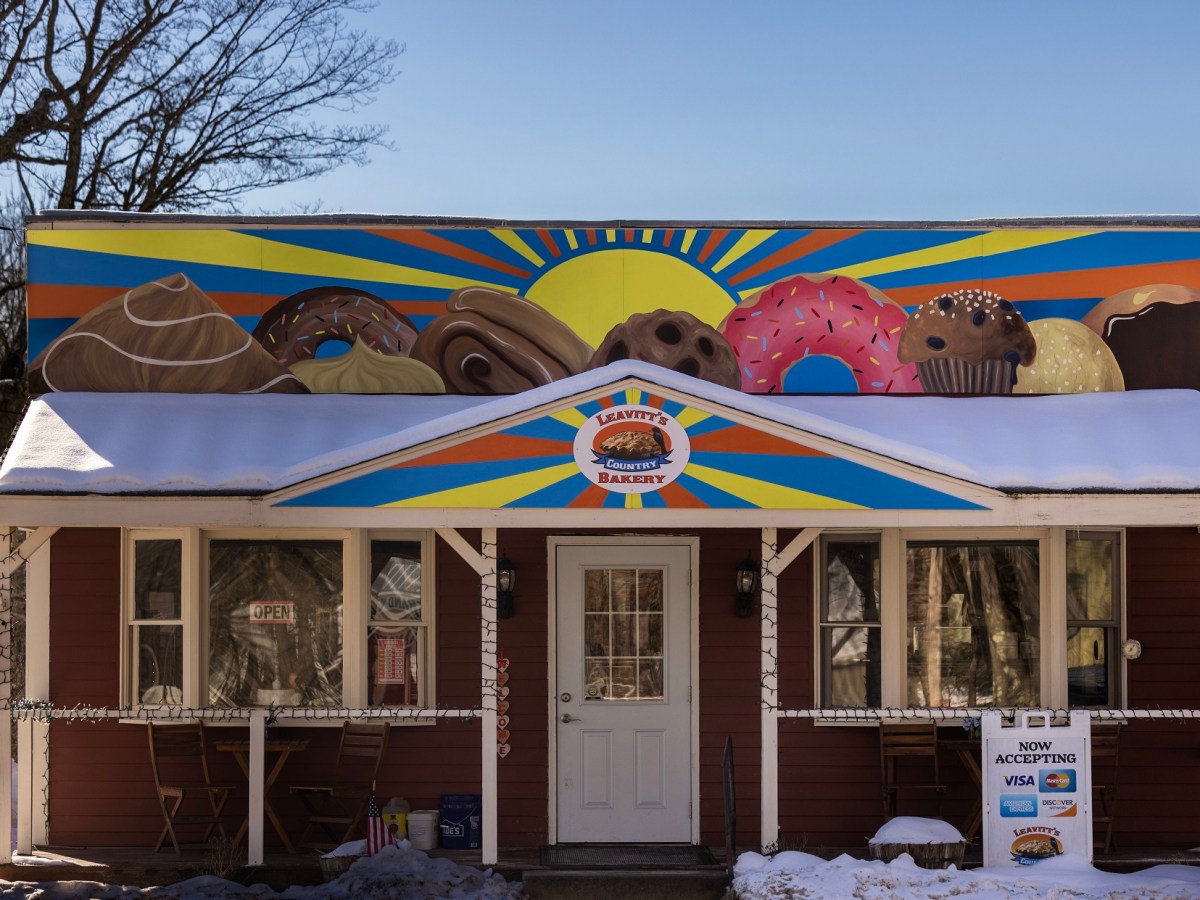SAN FRANCISCO — As an Iranian living in San Francisco, Mehrnaz Abdollahian felt strongly about supporting her community. It was this sentiment that led her to attend “The Wind in My Hair,” a performance in the courtyard at the Legion of Honor meant to show solidarity with Iran’s protesters. Dozens of demonstrators have been killed and hundreds have been arrested since September, when the Islamic Republic’s morality police killed 22-year-old Mahsa Amini after she was detained for wearing her hijab improperly.
In the performance, attended by more than 100 people, Iranian artist Mobina Nouri stood in front of the crowd wearing a red velvet dress with small scissors safety pinned to it, a red blindfold covering her eyes. Strands of her hair had black fabric tied to them that looped around large pillars in the courtyard. Paper cranes hung from the strands. Sometimes Nouri held up her left hand, with the word “HOPE” printed on the palm, and sometimes she showed her right palm, which bore the phrase “WOMEN LIFE FREEDOM,” an originally Kurdish slogan that has become a rallying cry for Iranian protesters.
“I really loved it,” Abdollahian said of the event. “It really resonated with my experience of living in Iran and growing up in a country governed by religious law where you can’t show your hair or some body parts.”
The Wind in My Hair began with the sounds of a protest in Tehran emanating from a speaker in the courtyard, with people chanting “Women, life, freedom!” This was followed by a short duet, “Voices of Iran,” interpreted in spike fiddle and flute by two musicians sitting on a small rug in front of Nouri. When they finished, Nouri, still blindfolded, raised a hand and cut a lock of hair next to her face. Then, audience members came up, sometimes on their own, sometimes several at a time, took the scissors and cut a strand, until Nouri was free of them and the scissors were lying on the rug in front of her.
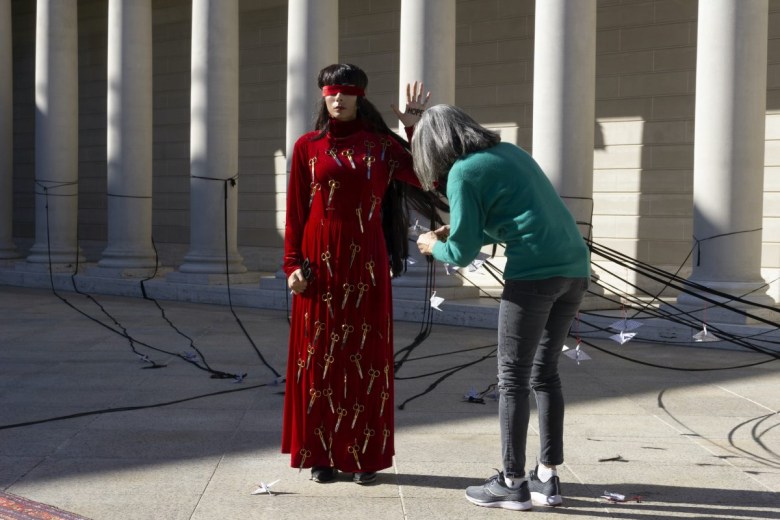
Taking the scissors to her own hair was an invitation to others to do the same, Nouri said.
Abdollahian responded and thought the symbolic act had power.
“It feels like you’re becoming free,” she said. “And you’re helping someone else to become free.”
Nouri, who grew up in Iran and got a PhD in creativity from City, University of London before moving to San Francisco, had done a version of this performance at San Francisco’s Clarion Alley after an invitation from curator Katayoun Bahrami. Nouri told Hyperallergic that hair has become the symbol of the resistance in Iran and she wanted to do something interactive, so she came up with the idea of audience members cutting her hair. She wore a red velvet dress to invoke at once revolution and femininity.
A friend of Nouri’s, who gave her name as Ebti, photographed the event. She said that having come from Egypt, what is happening in Iran seems particularly relevant, and she liked that Nouri remained silent rather than explaining what she was doing.
“She was standing there blindfolded with all the scissors hanging on her dress, with her hair tied to the fabric that’s tied to the pillars, which must have some weight. You could see every time people snapped a string, she went forward a little,” Ebti said. “It seems simple for some people, but this is obviously a big endurance performance, just standing there quietly and holding this much space, with so many different people with their different emotions.”
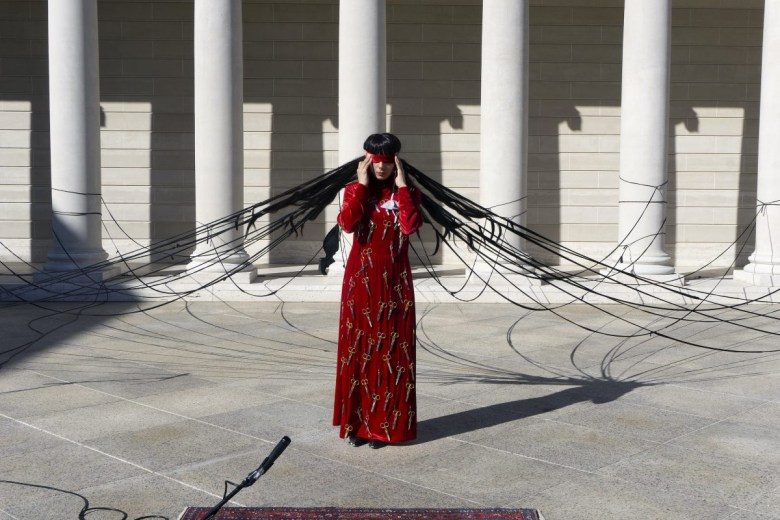
Melissa Gonzales drove up from Los Altos to attend the performance. She said she hadn’t planned on cutting Nouri’s hair, but it felt like something she needed to do.
“I’m excited to see more exhibitions like this, where people are trying to empower everyone else to be part of the movement,” Gonzales said.
It meant a lot to be in front of a museum audience, Bahrami said, and they hope to bring The Wind in My Hair to other museums in cities including Los Angeles, Chicago, and New York. Both Bahrami and Nouri feel that things could change in Iran with the support they are getting internationally. That’s why she wrote “HOPE” on her palm, Nouri says.
“For me, it’s about all my friends and sisters and brothers inside Iran. They’re a super young generation and they’re super brave, going to the streets, with their life in their hands, for the hope of having a basic freedom,” she said. “I’m just telling it through arts because I don’t have any other language, and I think the arts language is very powerful. And in this movement, I think arts play a really huge role inside Iran and outside.”

